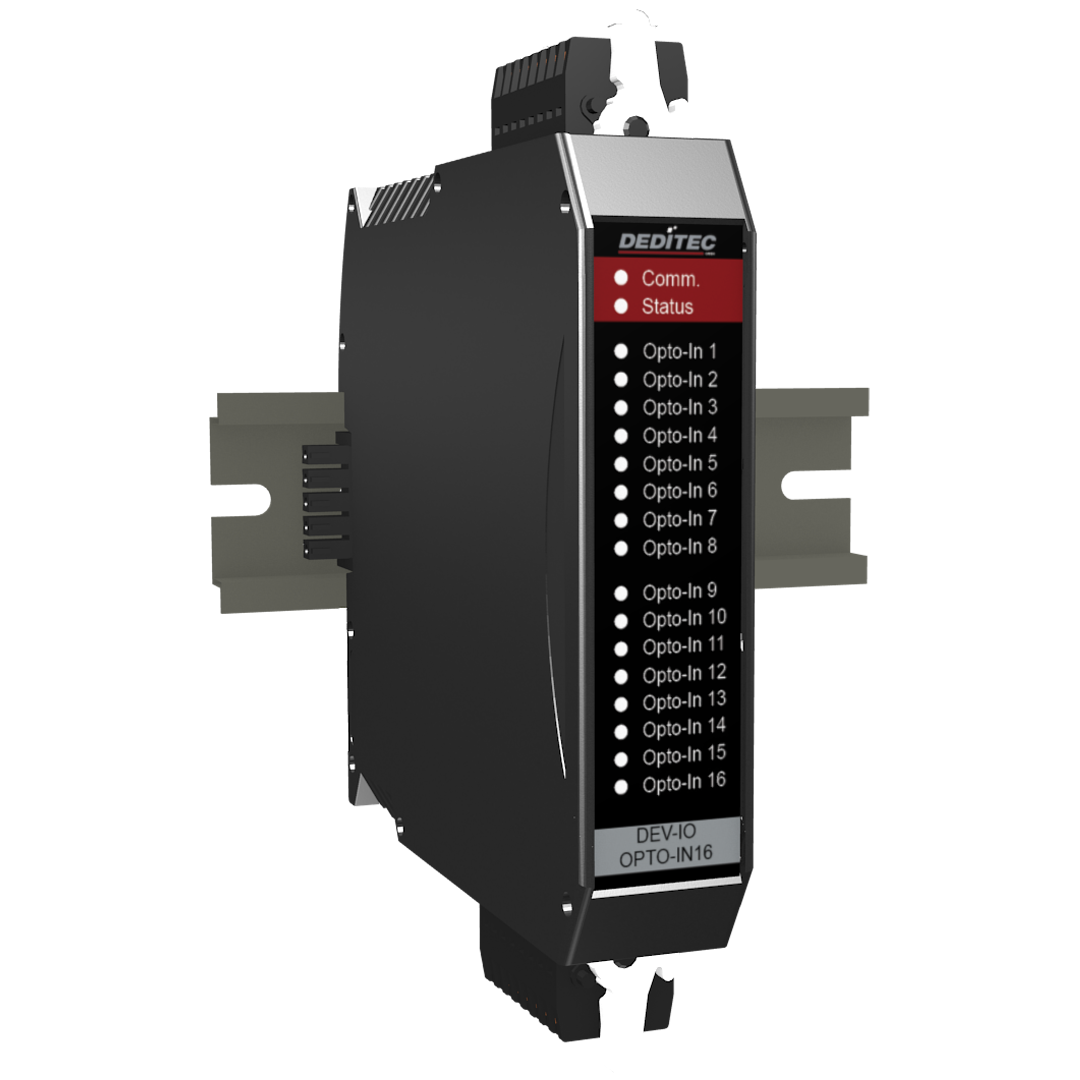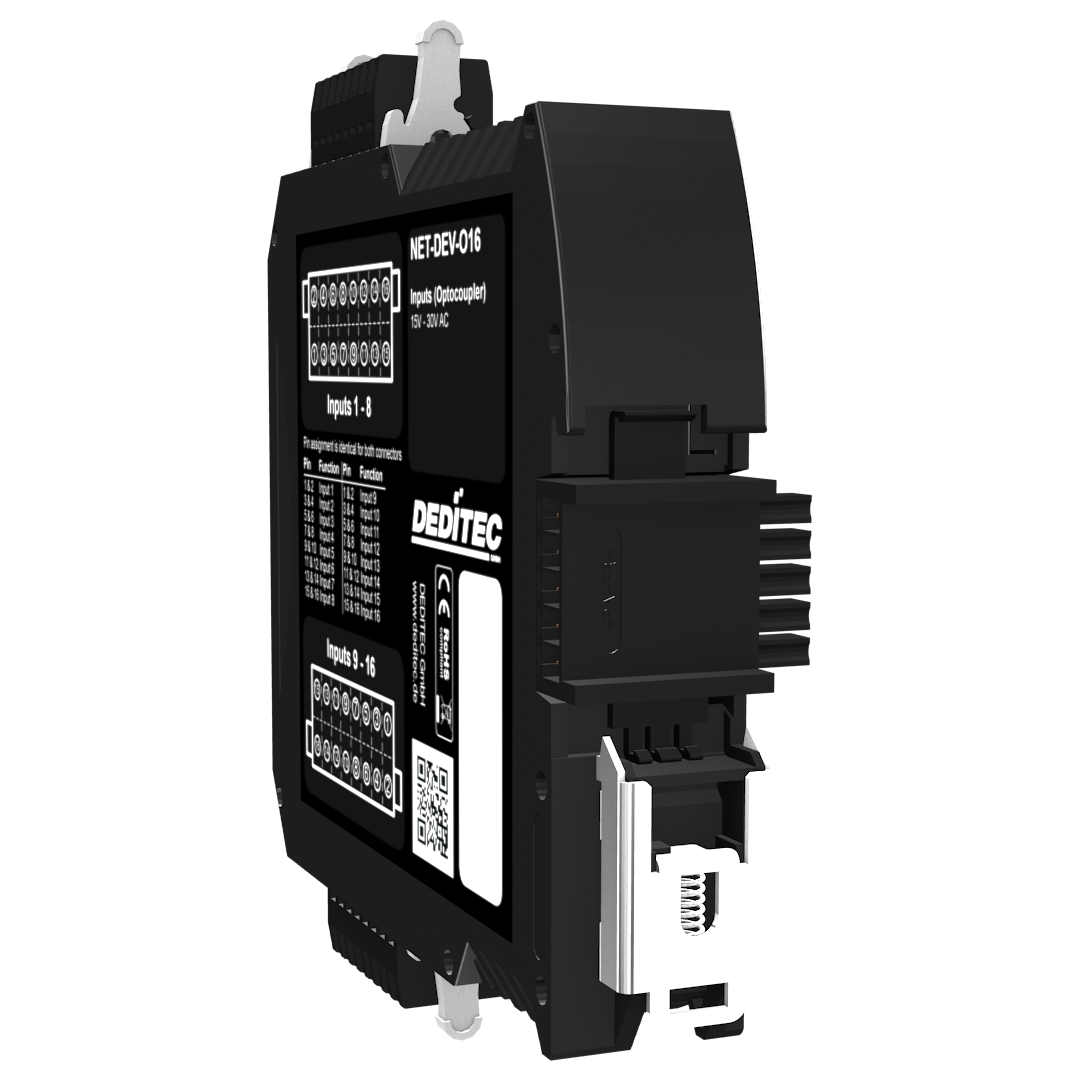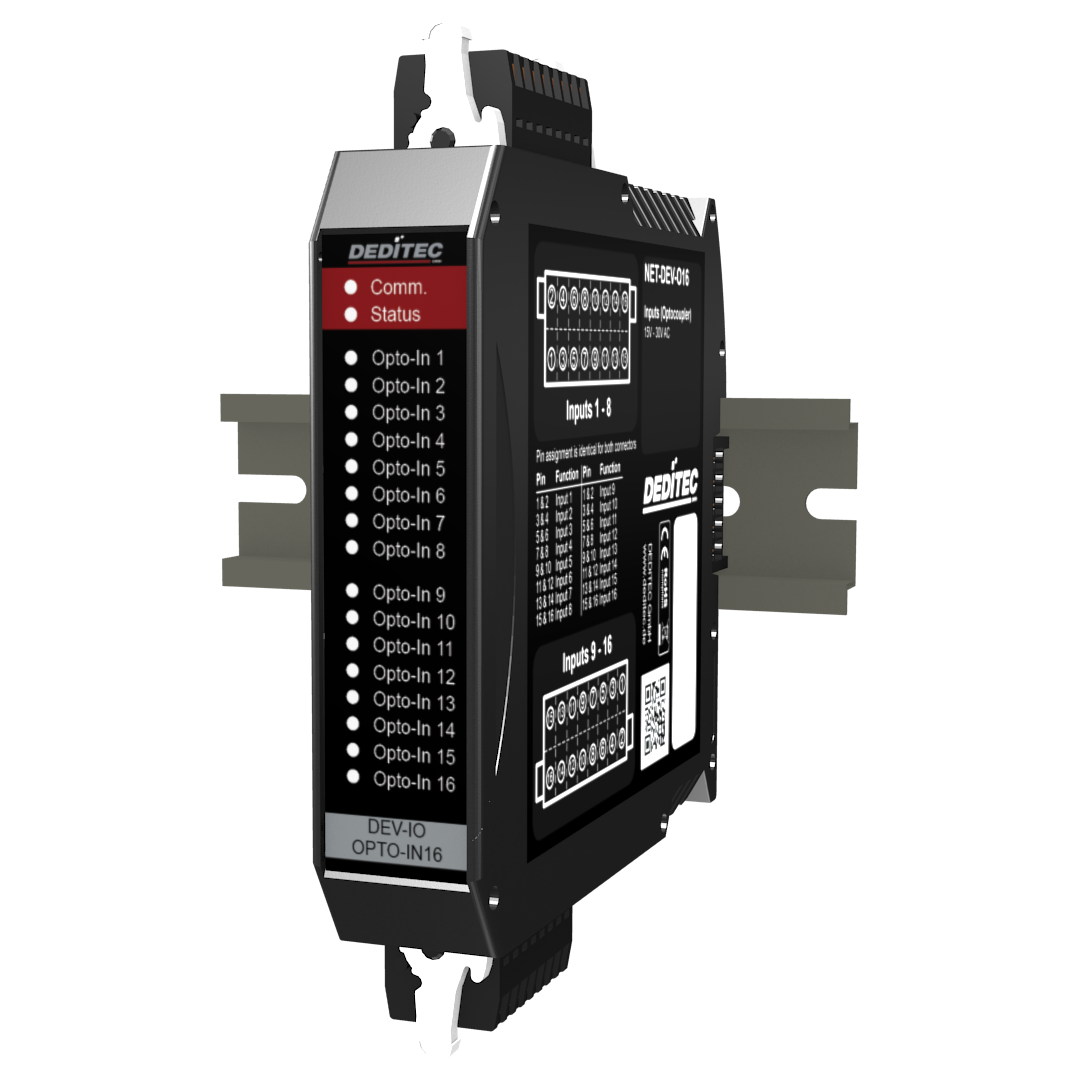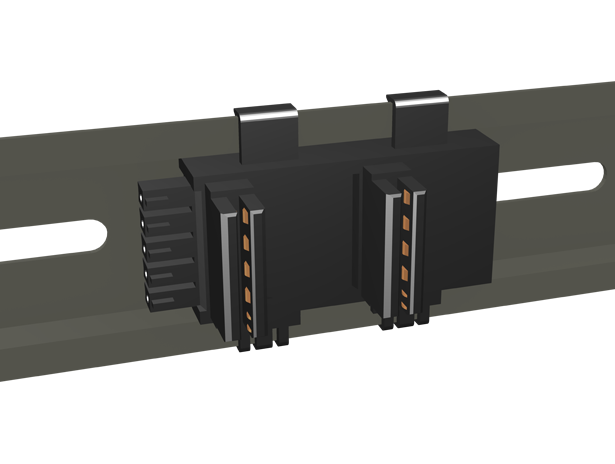The NET-DEV-OPTO-IN16 module has 16 digital inputs to detect voltage levels from +5V to +50V AC /DC. It serves as an extension possibility for the NET-CPU basic modules and is integrated into an existing NET system by means of Plug’n Play plug connection (DIN Rail-Bus).
- 16 digital inputs: 15V – 30V AC/DC (optional 5V – 15V or 30V – 50V)
- 16 bit counter per channel (up to 10kHz) with latch function
- Filter for counter / flipflops adjustable from 5ms – 255ms
- LED status display per input channel

Digital inputs
With our optocoupler inputs, digital signal states can be recorded within a voltage range of 5V to 30V AC or DC. Input and output circuits are galvanically isolated from each other up to 2.5kV.
Digital In Input Filter
With our Digital-In modules, an input filter can be set in a time interval of 1ms…255ms to filter interference pulses.
This means that AC signals can also be detected cleanly.
Counter
Each input has a 16 bit counter that can count up to 65535 pulses. If the maximum counter value is exceeded, the counting process starts again from zero. By means of a software command, the current status of all input counters can be read from the module simultaneously.
Recording of status changes
Status changes that occur between the readout cycles are reliably detected by internal flip-flops and can be read out separately by software. In addition, such an event is signalled by a status LED. Resetting is done automatically after the flip-flops have been read out.

Easy installation thanks to DIN rail bus
Thanks to the practical NET-Bus connector, which is clipped into the top-hat rail, individual modules of a system can be added or exchanged very easily. This Plug’n Play principle makes commissioning easier and eliminates the need for tiresome wiring.

LEDs
On the front side of our NET modules there are a number of status LEDs. These give you a quick overview of the most important functions of the modules, such as the switching states of the individual I/Os, module status or whether clean communication via the DIN rail bus is possible. This can be very helpful for fast error analysis, especially for field applications.

Connectors
A screwless system from the manufacturer WAGO Kontakttechnik is used as the connector. The 1-wire female connectors are 100% protected against mismating and have an eject and locking mechanism. All conductor types up to 1.5mm² can be connected.
































































































Reviews
There are no reviews yet.